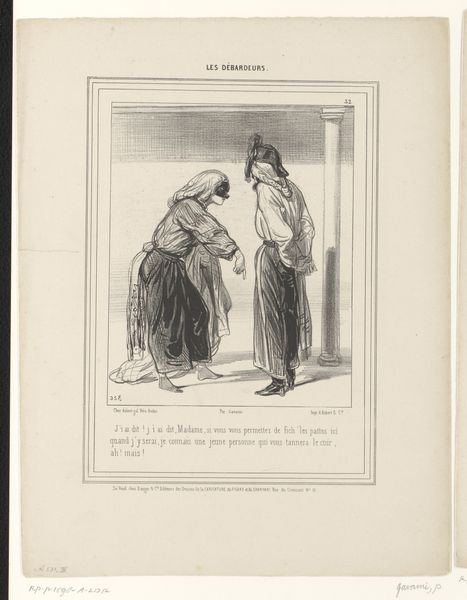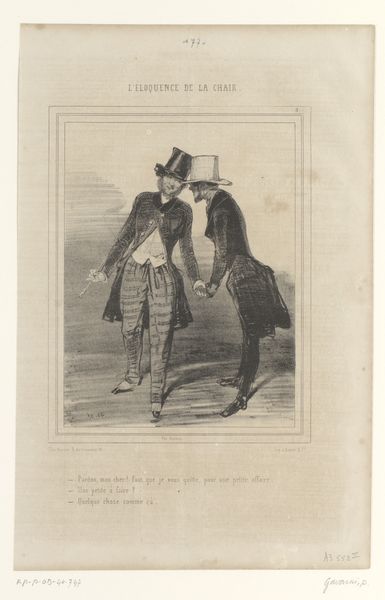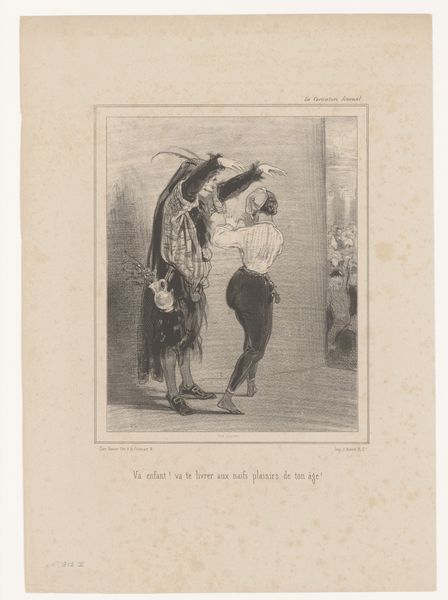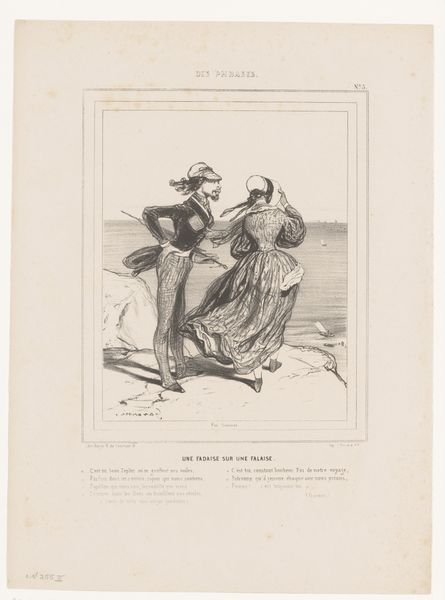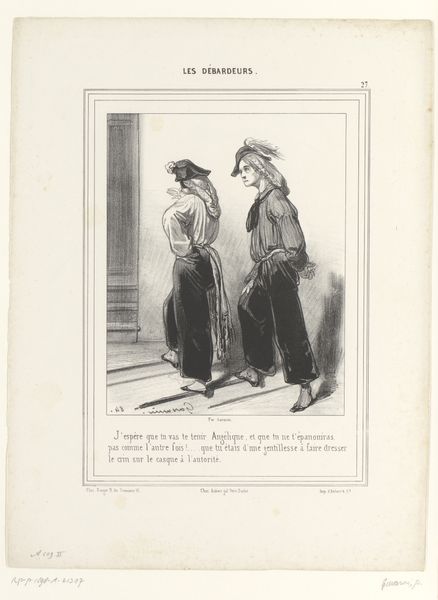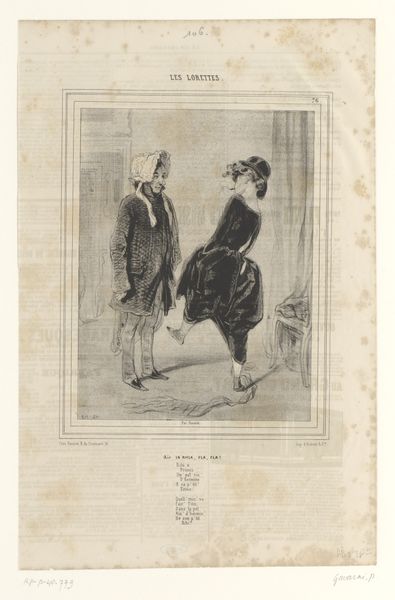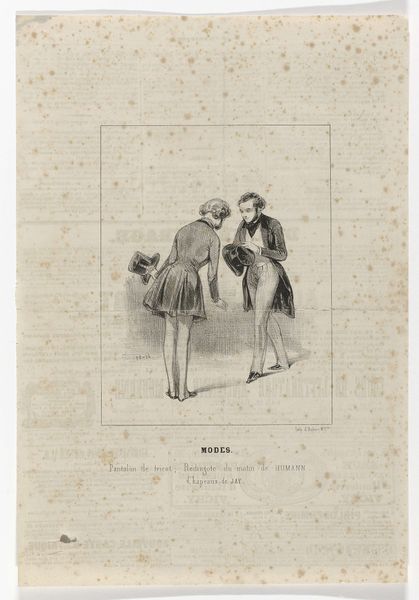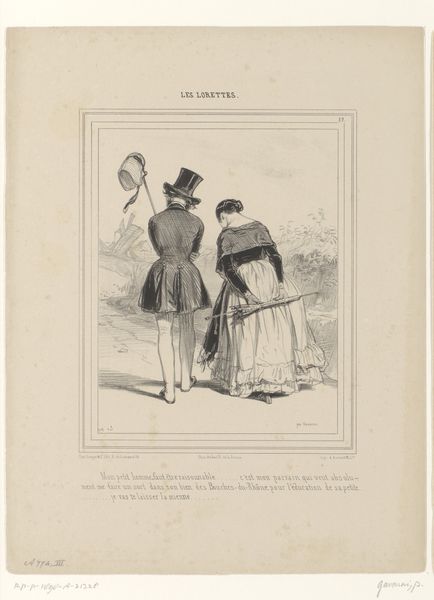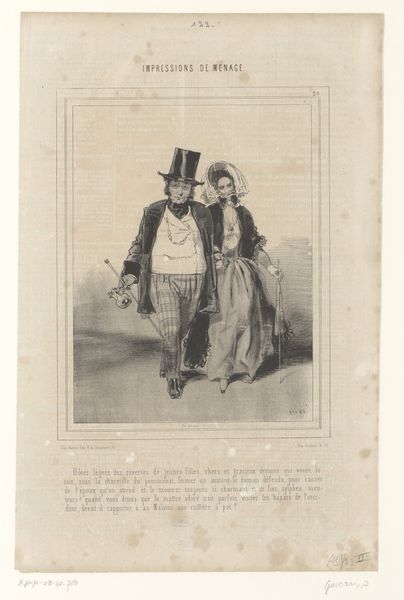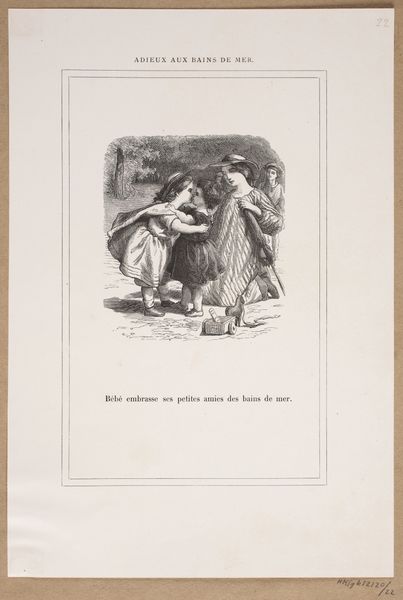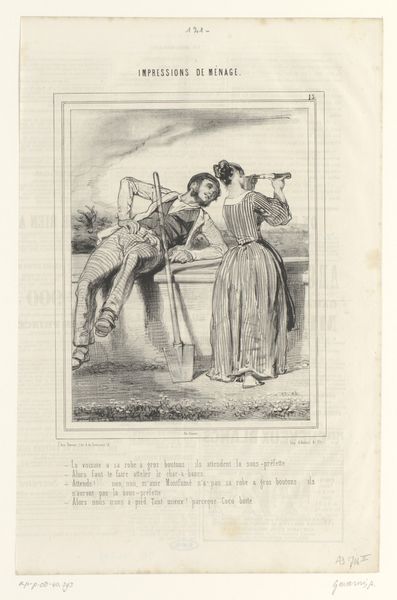
lithograph, print
#
lithograph
# print
#
caricature
#
romanticism
#
genre-painting
Dimensions: height 358 mm, width 262 mm
Copyright: Rijks Museum: Open Domain
Curator: Let's take a closer look at Paul Gavarni's 1840 lithograph, "Two Men Dressed Up Going to a Carnival Ball," which is housed here at the Rijksmuseum. What is your first impression of it? Editor: There's an immediate awkwardness that grabs me, perhaps a tension between these two figures despite the lighthearted context. The etching has a kind of forced frivolity, like strained laughter. Curator: Indeed. Gavarni was known for capturing the subtleties of social performance, particularly during the Romantic era. The act of dressing up, particularly for men dressing as women, holds a lot of symbolic weight here. Notice how he uses caricature to expose a certain societal hypocrisy. Editor: I am wondering, given its process of creation, what lithography afforded him at this moment in time. How quickly could prints like this be circulated and consumed? The wide distribution of printed images at this time democratized caricature and satire, spreading commentary rapidly and shaping public discourse. Curator: Absolutely. And in their costumes, we find echoes of ancient rituals and archetypes. The carnival, after all, is a liminal space, a temporary suspension of social norms where identity is playfully destabilized. One figure strikes a theatrical pose, arms aloft in mock outrage, while the other rests a hand nonchalantly on their hip. This speaks to themes of gender performance and the questioning of social roles within a rapidly changing 19th century. Editor: The cross-dressing becomes less about gender itself, and more about questioning these constraints. It’s a deliberate, physical act, materialized through clothing and how that production and reception plays out in society. How the masses interpret it. And consider the waste of these printed images; it's a thought, right? Curator: Very much so. The lithograph allows for subtle nuances in shading, highlighting certain figures and obscuring others. This play with light and shadow draws attention to the performative nature of their deception. Editor: So what’s revealed by emphasizing this means of artistic creation? We get an immediate sense of replication. What are they replicating? Societal norms, right? It’s a perfect visual and material representation. Curator: A thought to linger on. Gavarni has managed to encapsulate not only the visual spectacle of the carnival but also the deeper social currents at play. Editor: Indeed. Thinking about this work, with its simple lithographic materials and bold social commentary, reminds us that the method matters as much as the message.
Comments
No comments
Be the first to comment and join the conversation on the ultimate creative platform.

